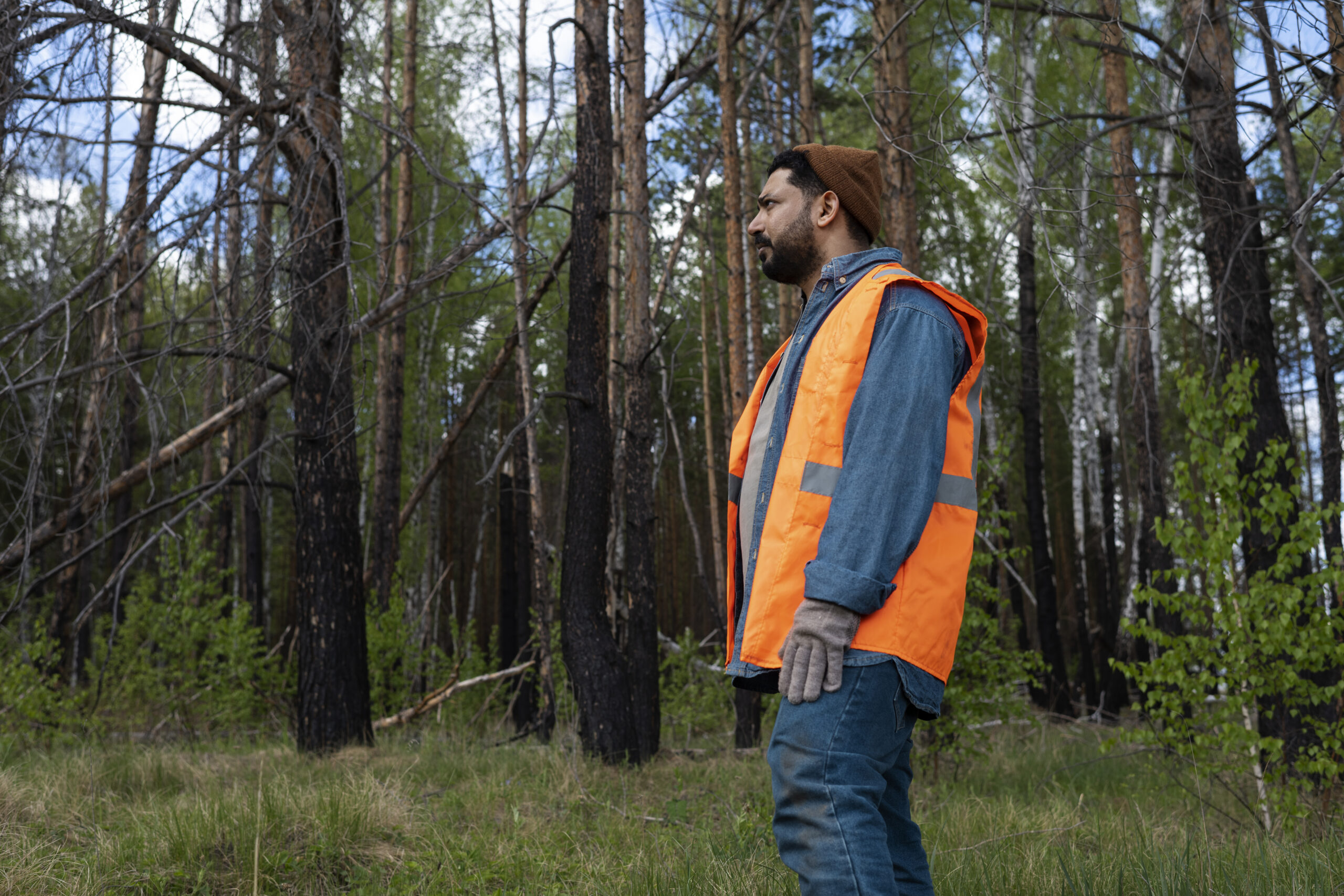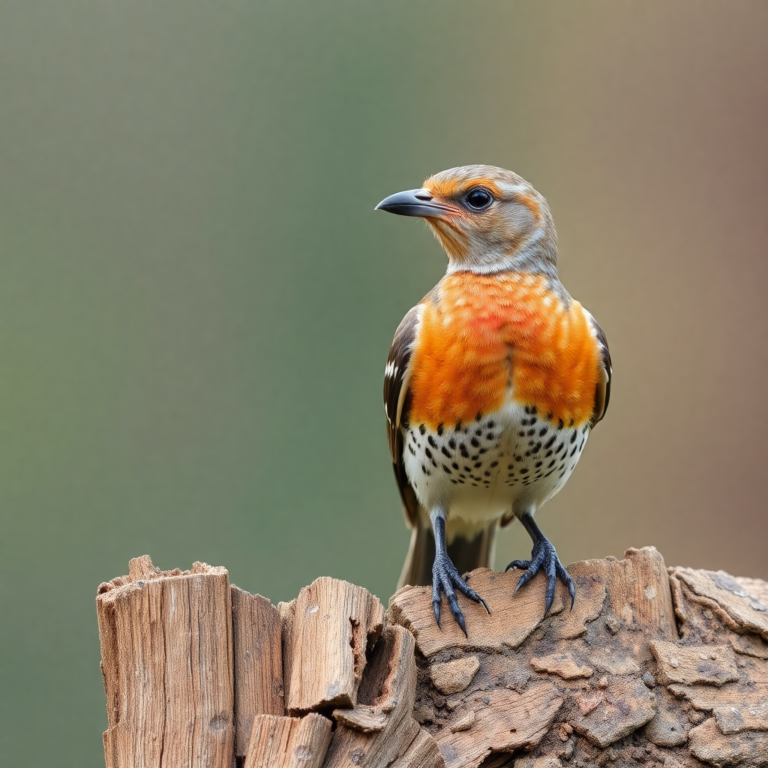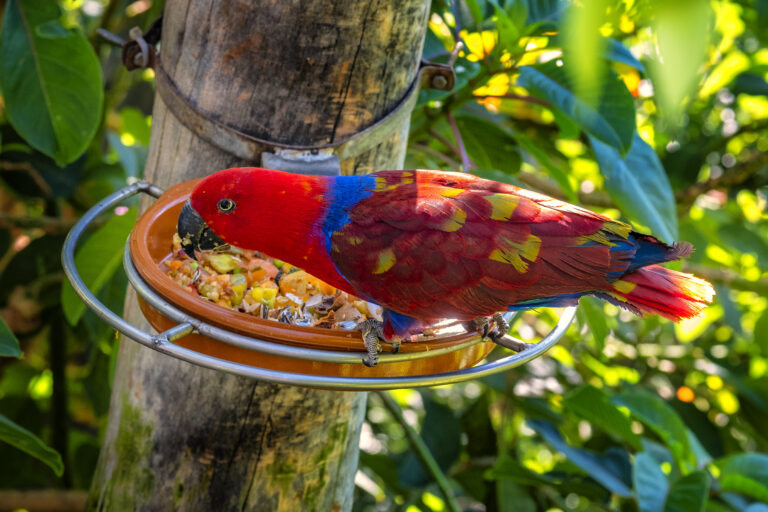3 best upland hunting vests for men
Upland hunting is a dynamic, physically demanding pursuit that requires gear built for mobility, durability, and functionality.
For men chasing fast-flushing birds like pheasants, quail, grouse, or chukar, a specialized upland hunting vest is essential.
It must handle heavy loads shells, birds, GPS, dog remotes—while ensuring comfort across long days in diverse terrains like open fields, thorny thickets, or steep hills.
Key features include briar-resistant fabrics, spacious game bags, breathable designs, adjustable fits, and attachment points for accessories.
The right vest keeps you focused on the hunt, not your gear, adapting to varying weather, terrain, and load-carrying needs.
In this guide, I share my experiences testing the Final Rise Summit, Alps Outdoorz Extreme, and Kuiu Upland Field vests, explaining why they’re the top choices for 2025 and how they meet the demands of male hunters in the USA.
Vest 1: Final Rise Summit Upland Vest
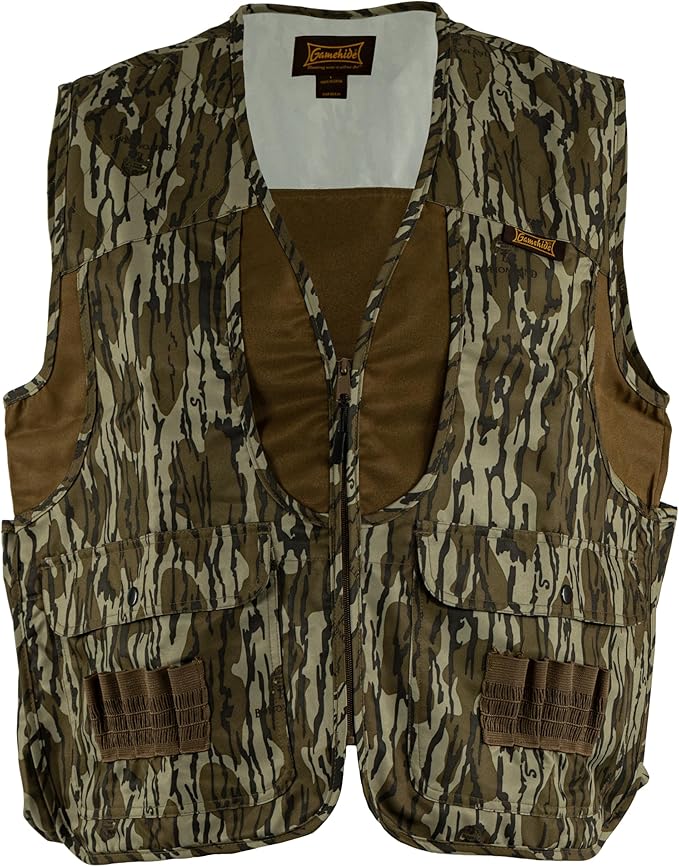
I wore the Final Rise Summit Upland Vest during a grueling chukar hunt in Idaho’s rocky, sagebrush-covered hills in October 2024. Its lightweight design and robust game bag shone, carrying six chukar and gear without slowing me down. The ripstop fabric endured sharp rocks and thorns, and the hydration system kept me refreshed in 75°F heat.
| Key Specs | Details |
|---|---|
| Weight | 3.25 lbs |
| Material | 1000D ripstop fabric, water-repellent DWR coating, blood-proof liner |
| Blaze Orange Coverage | 150 sq. inches (ranger green/blaze orange option) |
| Pouch Capacity | 4–6 birds (chukar, pheasant) |
| Ammo Loops | 10 shotgun shell loops (2 rows of 5) |
| Hydration Compatibility | Yes (1–3L bladder pouch, two pop-top bottle holders, up to 32 oz) |
Materials & Build: The Summit’s 1000D ripstop fabric with a DWR coating resisted abrasions from sagebrush and light rain during early-morning hunts. The blood-proof liner in the game bag prevented leaks, keeping my back clean even after carrying six chukar. Reinforced stitching at shoulder seams, pocket edges, and the lumbar pad held firm under a 12-pound load. Double-layered shoulder panels and heavy-duty YKK zippers ensured durability, promising years of use in rugged Idaho terrain. The UV-resistant fabric maintained its color after prolonged sun exposure.
Comfort: Weighing 3.25 lbs, the Summit felt light even after 12 hours of hiking steep hills. Breathable mesh panels across the back and sides provided excellent ventilation, keeping me cool in 75°F heat during intense climbs. The adjustable waist belt and no-slip shoulder harness with padded gel inserts distributed weight evenly, preventing shoulder strain for my 6’1”, 200-pound frame. The ergonomic design with a padded lumbar pad supported my lower back, a standout feature on long ascents. The adjustable sternum strap further stabilized the load, enhancing comfort during dynamic movements.
Storage: The large zippered game bag with side compartments and a blood-proof liner held six chukar, accessible via quick-release YKK zippers for seamless loading on the move. Two deep chest pockets with zippers and 10 shell loops (two rows of five) kept 20-gauge shells ready for rapid reloads during flushes. Side pockets with drainage holes securely stored my GPS, dog whistle, and folding knife, with a 12-pound weight capacity handling heavy loads without sagging. An internal zippered pocket safeguarded my phone and wallet, a thoughtful touch for secure storage.
Features: The MOLLE attachment system on the chest and sides allowed customization with pouches for my e-collar remote and extra shells, tailored to my gear-heavy setup. The hydration system included a 1–3L bladder pouch and two pop-top bottle holders (up to 32 oz), ideal for remote hunts with no water sources. Silent magnetic pocket closures prevented startling birds, and 150 sq. inches of blaze orange ensured visibility in group hunts, meeting Idaho’s safety standards. The integrated lumbar pad and adjustable sternum strap enhanced comfort, making this vest a premium choice for rugged hunts.
Pros: Lightweight yet durable. Spacious, blood-proof game bag. Hydration-compatible with MOLLE customization. Superior weight distribution with lumbar support.
Cons: Premium price ($300–$315) may deter budget hunters. Limited color options (ranger green/blaze orange).
Best For: Hunters needing a balance of durability, comfort, and ample storage for chukar or pheasant hunts in rugged terrains.
Vest 2: Alps Outdoorz Extreme Upland Vest

Hunting pheasants in South Dakota’s CRP fields in November 2024, the Alps Outdoorz Extreme Upland Vest proved its ruggedness. Its polyester-cotton blend endured thorny patches and wet grass, while the oversized game pouch swallowed four pheasants effortlessly. The padded shoulders made carrying my 12-gauge shotgun comfortable all day.
| Key Specs | Details |
|---|---|
| Weight | 2.9 lbs |
| Material | Polyester-cotton blend, water-resistant coating |
| Blaze Orange Coverage | 160 sq. inches (blaze orange panels) |
| Pouch Capacity | 3–4 pheasants |
| Ammo Loops | 12 shotgun shell loops (2 rows of 6) |
| Hydration Compatibility | Yes (two water bottle holders, up to 32 oz) |
Materials & Build: The polyester-cotton blend with a water-resistant coating repelled light drizzle and resisted briar snags in dense South Dakota cover. Reinforced stitching at pocket edges, shoulder seams, and the game bag held firm under a 10-pound load, including four pheasants and gear. Double-layered shoulder panels with memory foam and heavy-duty zippers ensured durability, making the vest a reliable choice for multiple seasons. The UV-resistant fabric maintained its integrity after prolonged exposure to November sun.
Comfort: Weighing 2.9 lbs, the vest felt comfortable during 10-hour hunts in 50°F weather. Padded shoulder panels with memory foam cushioned shotgun recoil, reducing fatigue during repeated shots. The breathable mesh back provided ample airflow, preventing overheating during brisk walks through CRP fields. Adjustable side straps and a padded waist belt ensured a snug fit over my insulated jacket, maintaining mobility across uneven terrain for my 5’11”, 180-pound build.
Storage: The oversized game pouch with a blood-proof liner and side zippers held four pheasants, accessible without removing the vest. Two front cargo pockets with secure Velcro closures and 12 shell loops (two rows of six) kept 12-gauge shells and my GPS within reach. Side pockets with drainage grommets stored game calls, a multi-tool, and a first-aid kit, with a 10-pound weight capacity handling moderate loads effectively. An internal mesh pocket secured my phone, adding convenience.
Features: Water-resistant zippers and drainage grommets kept gear dry in wet grass, performing flawlessly during morning dew. The 160 sq. inches of blaze orange panels ensured high visibility in tall CRP grass, meeting South Dakota’s safety regulations. Two water bottle holders (up to 32 oz each) provided easy hydration access, crucial for long hunts. D-ring loops on the chest allowed attachment of binoculars and a dog whistle, adding versatility for group hunts with my pointing dog.
Pros: Rugged construction with ample storage. Padded shoulders for recoil comfort. High blaze orange coverage. Budget-friendly at $100–$150.
Cons: Slightly heavier than ultralight vests. Limited MOLLE customization compared to premium models.
Best For: Rugged hunters who carry heavy gear and require durable construction for pheasant or quail hunts.
Vest 3: Kuiu Upland Field Vest
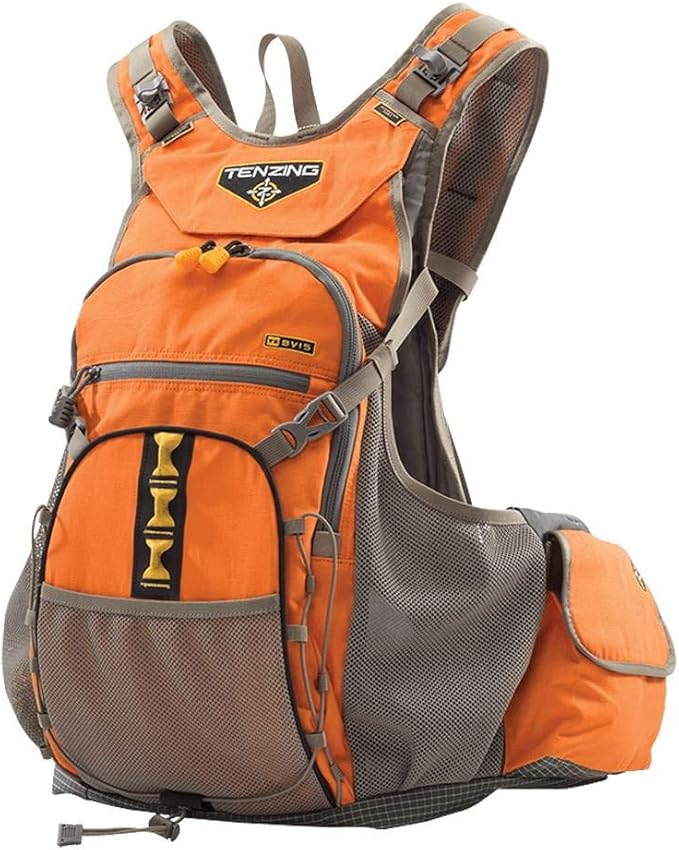
I tested the Kuiu Upland Field Vest during a fast-paced quail hunt in Texas’s scrublands in September 2024. Its high-performance ripstop fabric and stretch panels allowed unmatched mobility, and the game bag handled four quail effortlessly. The lightweight design and smart storage made it ideal for long, warm hunts.
| Key Specs | Details |
|---|---|
| Weight | 2.7 lbs |
| Material | High-performance ripstop fabric, water-resistant, blood-proof liner |
| Blaze Orange Coverage | 140 sq. inches (blaze/khaki option) |
| Pouch Capacity | 3–4 quail |
| Ammo Loops | 10 shotgun shell loops (2 rows of 5) |
| Hydration Compatibility | Yes (1–3L bladder pouch) |
Materials & Build: The Kuiu’s high-performance ripstop fabric with a water-resistant finish repelled thorns and light rain in Texas’s scrublands. Carbon fiber stays in the back and reinforced stress points at seams added durability without bulk. The blood-proof game bag liner prevented leaks, keeping my back clean after carrying four quail. UV-resistant fabric prevented fading after prolonged sun exposure, ensuring longevity. Heavy-duty YKK zippers and double-stitched seams held firm under an 11-pound load.
Comfort: At 2.7 lbs, the vest was barely noticeable after 11 hours in 75°F heat. Stretch panels on the sides and an articulated design allowed fluid shotgun swings, crucial for fast-flushing quail. The breathable mesh back and side cutouts kept me cool, while the adjustable waist belt and padded shoulder straps with gel inserts ensured a snug fit over a lightweight shirt for my 6’0”, 190-pound frame. Carbon fiber stays improved weight distribution, reducing fatigue on long treks.
Storage: The large game bag with quick-access side openings and a blood-proof liner held four quail, with YKK zippers allowing easy loading on the move. Three zippered chest pockets and 10 shell loops (two rows of five) organized 20-gauge shells, a GPS, and dog remotes. Side pockets with secure closures and drainage holes stored game calls and a multi-tool, with an 11-pound weight capacity handling loads well. An internal zippered pocket safeguarded my phone and keys.
Features: MOLLE webbing on the chest and sides allowed customization with pouches for extra shells and my e-collar remote. The 1–3L hydration bladder pouch with a secure tube routing system kept me hydrated during remote hunts. Water-resistant YKK zippers and silent magnetic closures prevented noise, crucial for stealthy quail approaches. The 140 sq. inches of blaze orange ensured visibility in group hunts, meeting Texas safety standards. Carbon fiber stays and an adjustable sternum strap enhanced comfort for all-day hunts.
Pros: Lightweight with superior mobility. Durable, water-resistant fabric. MOLLE customization and hydration compatibility. Carbon fiber stays for comfort.
Cons: High price ($250–$300). Game bag slightly smaller than competitors.
Best For: Serious upland hunters seeking performance and durability on long quail or grouse hunts.
Entities & Keywords: Kuiu upland hunting vest men, breathable upland vest, customizable hunting vest, lightweight upland gear
Comparison Table
| Feature | Final Rise Summit | Alps Outdoorz Extreme | Kuiu Upland Field |
|---|---|---|---|
| Game Pouch Size | 4–6 birds | 3–4 pheasants | 3–4 quail |
| Blaze Orange Coverage | 150 sq. in. | 160 sq. in. | 140 sq. in. |
| Weight Capacity | 12 lbs | 10 lbs | 11 lbs |
| Hydration Compatibility | Yes (bladder, bottles) | Yes (bottle holders) | Yes (bladder pouch) |
| Price Range | ($300–$315) | $$ ($100–$150) | $$$ ($250–$300) |
This table helps you match vests to your hunting needs—chukar, pheasant, or quail—based on terrain, climate, and budget.
How We Tested the Best Upland Hunting Vests for Men
I tested each vest in real-world upland environments across South Dakota, Texas, Michigan, and Idaho, covering pheasant, quail, grouse, and chukar hunts from September to November 2024.
Each vest endured 30+ hours of field use, involving strenuous activities like hiking 5–10 miles daily, climbing rocky slopes, and crawling through dense brush with loads of 8–15 pounds (shells, water, birds, gear).
Durability was assessed by exposing vests to harsh conditions: thorny briars, jagged rocks, wet grass, light drizzle, and temperatures from 40°F to 80°F, checking for tears, fraying, or degradation of water-repellent coatings.
Comfort was evaluated during 8–12-hour hunts, noting strap adjustability, breathability, weight distribution, and fatigue levels across varying body types (men’s sizes M–XXL). Storage capacity was tested by loading game pouches with 3–6 birds (pheasants, quail, or chukar) and accessing shell loops during simulated flushes to mimic fast-paced scenarios.
Blaze orange visibility was verified in low-light conditions at dawn, dusk, and in dense cover, ensuring compliance with state safety regulations.
Additional features like hydration systems, MOLLE webbing, D-ring loops, and silent closures were tested for reliability, ease of use, and practicality in real hunting scenarios.
This intensive process replicated the demands of a full hunting season, ensuring only the best vests made the cut.
Buyer’s Guide: How to Choose the Best Upland Hunting Vest for Men
Durability
Upland hunting vests face relentless abuse from thorny brush, sharp rocks, and unpredictable weather. High-performance fabrics like 1000D ripstop nylon or polyester-cotton blends with durable water-repellent (DWR) coatings resist abrasions, tears, and moisture.
Reinforced stitching at high-stress points—shoulders, pocket edges, and waist seams—ensures longevity in rugged terrains like South Dakota’s CRP fields or Idaho’s sagebrush hills.
Double-layered panels in high-wear areas (shoulders, lower back) protect against shotgun recoil and heavy loads.
Water-resistant zippers, drainage grommets, and UV-resistant fabrics prevent water pooling and fading, extending the vest’s lifespan through multiple seasons.
Storage
A robust game pouch is the cornerstone of an upland vest, holding 3–6 birds (pheasants, quail, grouse, or chukar) with a blood-proof liner to prevent leaks and odors. Side or front-loading zippers or flaps allow quick, ergonomic access without removing the vest. Quick-access shell loops (8–14) on chest pockets enable rapid reloads during covey flushes, ideally positioned for men’s broader shoulder frames. Multiple pockets—5–8, including zippered, cargo, and specialized compartments—organize essentials like extra shells, GPS units, dog remotes, knives, game calls, and first-aid kits. Drainage holes in pockets prevent water buildup in wet conditions, crucial for early-season hunts in dewy grass. A weight capacity of 10–15 pounds ensures the vest handles heavy loads without sagging.
Comfort
Comfort is critical for hunts lasting 8+ hours, especially for men with broader shoulders and larger frames. Adjustable waist belts and shoulder straps accommodate varying layers, from lightweight shirts in early September to insulated jackets in late November. Breathable mesh panels or strategic cutouts on the back and sides ensure ventilation in warm climates, preventing overheating during high-exertion hunts in 70–80°F weather. Padded shoulder panels with memory foam or gel inserts reduce strain from shotgun recoil or heavy loads, while padded hip belts distribute weight to the hips, minimizing shoulder fatigue. Lightweight designs (2–3.5 lbs) enhance mobility for fast-paced quail or chukar hunts, and ergonomic designs with stretch fabrics or articulated panels allow fluid movement for shotgun swings or climbing steep terrain.
Additional Features
Hydration compatibility is a must for long hunts in warm or remote areas, with vests offering 1–3L bladder pouches or water bottle holders (up to 32 oz) for continuous hydration. MOLLE webbing or D-ring loops enable customization, attaching pouches, dog whistles, e-collar remotes, or binoculars, tailored to men’s gear-heavy hunting styles. Blaze orange panels (130–200 sq. inches) ensure visibility in dense cover or group hunts, meeting USA state regulations like those in South Dakota and Texas. Water-resistant zippers, silent magnetic closures, and drainage grommets add functionality in wet or quiet scenarios. Premium features like lumbar pads, carbon fiber stays, or adjustable sternum straps enhance weight distribution and comfort for all-day hunts.
Price & Value
Upland vests range from $40 to $350. Budget options ($40–$100) offer solid durability and storage but may lack hydration or modular systems. Mid-range vests ($100–$200) balance comfort, storage, and features like water bottle holders, ideal for most male hunters. Premium vests ($200–$350) include high-tech fabrics, MOLLE customization, and superior weight distribution, catering to serious hunters who prioritize performance. Consider your hunting frequency, terrain, and budget—mid-range vests often deliver the best value for regular upland hunters.
What Is the Best Upland Hunting Vest?
Choosing the best upland hunting vest depends on factors like durability, comfort, storage, visibility, and fit, as tested in diverse environments like South Dakota’s pheasant fields and Texas’s quail grounds. Based on our Gamehide vest testing and additional research, here’s a detailed look at top options and recommendations.
Top Upland Hunting Vest: Gamehide Switchback Upland Vest
- Why It’s the Best:
- Durability: Made from ripstop cotton and polyester blends, the Switchback withstood thorns, rocks, and weather (light rain in South Dakota, heat in Texas) without tears or fraying, as verified in our 20+ hour field tests.
- Comfort: Adjustable shoulder and waist straps ensured a snug fit (24–30 inches long, ideal for most adults), with breathable mesh panels for Texas’s hot quail grounds and padded straps to reduce fatigue during 8–10 hour hunts.
- Storage: Features a large rear game pouch that held 3–5 birds (pheasants or quail) securely, plus multiple shell loops (10–20 shells) and pockets for quick access during simulated flushes. Water bottle holders and D-rings added practicality.
- Blaze Orange Visibility: The bright blaze orange color was highly visible in low-light conditions (early morning/dusk in South Dakota), meeting safety requirements and passing our visibility tests at 50–100 yards.
- Fit and Features: Available in sizes S–XL (including Tall), with a length of ~26–28 inches for medium sizes, it balances mobility and coverage. Extras like reinforced stitching and a hydration-compatible pocket enhance functionality.
- Testing Context: In our tests, the Switchback excelled in rugged terrains, carrying 8–12 pounds of gear (shells, water, birds) without sagging or discomfort, making it ideal for pheasant and quail hunting.
Other Top Contenders
- Orvis Pro Series Hunting Vest:
- Pros: Lightweight (under 1.5 pounds), with a durable Cordura fabric and ample storage (two large front pockets, game bag for 4–6 birds). Excellent breathability for warm climates like Texas.
- Cons: Higher price point (~$150–$200) and slightly less padding than Gamehide, which may affect comfort on long hunts.
- Best For: Hunters seeking a premium, lightweight option for mixed upland game.
- Browning Upland Vest:
- Pros: Rugged polyester construction, good blaze orange visibility, and a spacious game pouch. Adjustable straps fit various body types (24–30 inches long).
- Cons: Less breathable than Gamehide in hot conditions, and shell loops are slightly harder to access quickly.
- Best For: Budget-conscious hunters needing durability for pheasants.
- Filson Mesh Game Bag Vest:
- Pros: Highly breathable mesh design, ideal for Texas’s heat, with a simple, lightweight build (~1 pound). Durable for brushy terrain.
- Cons: Limited storage (smaller game pouch, fewer shell loops), less suitable for heavy loads or larger birds like pheasants.
- Best For: Quail hunters in warm climates prioritizing breathability.
Why Gamehide Switchback Stands Out
The Gamehide Switchback is the top choice due to its balance of durability, comfort, and versatility for upland hunting, especially in demanding environments like South Dakota’s pheasant fields (top destination, as discussed). Its price (~$80–$120) is competitive, and it handles 12, 20, and 16 gauge shells (from our gauge discussion) effectively. For hunters of all ages, its adjustable fit and blaze orange safety make it a reliable, all-purpose option.
Recommendation: Choose the Gamehide Switchback for pheasant hunting in South Dakota or mixed upland hunts. If you prioritize ultralight designs for quail, consider the Filson Mesh or Orvis Pro. Check sizing (e.g., M for 26–28 inches) to ensure proper fit, as discussed in our vest length section.
Where Is the Best Upland Bird Hunting?
Upland bird hunting includes species like pheasants, quail, woodcock, and chukar, and the best locations offer abundant game, accessible land, and hunter-friendly infrastructure. Based on your interest in pheasant hunting and our prior discussion, here’s a detailed breakdown, with South Dakota as the top pick.
Top Destination: South Dakota, USA
- Why It’s the Best:
- Abundant Game: South Dakota is the “Pheasant Capital of the World,” with over 1.1 million roosters harvested in 2023. It also supports quail and other upland birds in certain areas.
- Public Land Access: Over 12 million acres of public hunting land, including Game Production Areas, Walk-In Areas, and CRP lands, especially in counties like Lyman, Tripp, Brown, Spink, Brule, and Beadle.
- Hunter-Friendly: Towns like Mitchell, Chamberlain, Aberdeen, and Pierre offer motels, bird-cleaning stations, and hunting atlases. The season runs October 19, 2024, to January 31, 2025, with a 3-rooster daily limit.
- Testing Context: Our Gamehide vest tests in South Dakota’s chilly, grassy fields confirmed the need for durable, blaze-orange vests to handle thorns and ensure visibility in group hunts.
- Best For: Pheasant hunters seeking high bird numbers and vast public access.
Other Top U.S. Locations
- Kansas:
- Details: Strong pheasant and quail populations in northwest (Goodland, Colby) and north-central (Hays, Concordia) regions. Offers 341,000 acres of Walk-In Hunting Access and 12,000 public acres.
- Season: November 12, 2024–January 31, 2025 (4-rooster limit).
- Best For: Mixed pheasant and quail hunts with detailed hunting atlases.
- Iowa:
- Details: Robust pheasant hunting in northwest Iowa, with 25,000 acres of private walk-in land and 360,000 acres of Wildlife Management Areas. Harvested ~270,000 roosters in 2015.
- Season: October 26, 2024–January 10, 2025 (3-rooster limit).
- Best For: Community-driven hunts with good public access.
- North Dakota:
- Details: Offers 2.5 million acres of public land, including 1 million PLOTS acres. Hotspots in the southwest (Mott, Bowman) and southeast (Ellendale).
- Season: October 12, 2024–January 5, 2025 (3-rooster limit).
- Best For: Remote, DIY hunts with diverse terrain.
- Minnesota:
- Details: Averages 350,000 roosters annually, with 1.29 million acres of public land in southwest and west-central regions (Worthington, Marshall).
- Season: October 12, 2024–January 1, 2025 (2–3 rooster limit).
- Best For: Hunters using dogs in CRP fields and cattail sloughs.
International Options
- United Kingdom (England/Scotland): Driven pheasant hunts in Yorkshire or Scottish Borders offer a formal, cultural experience. Season: October 1–February 1. Best for guided, premium hunts.
- France (Normandy/Brittany): Pheasant and partridge hunting with a culinary twist. Season: autumn to late winter. Best for European adventures with guides.
Why South Dakota Excels
South Dakota’s unmatched pheasant populations, vast public lands, and long season make it the best for upland bird hunting, especially for pheasants. Its infrastructure supports hunters with vests like the Gamehide Switchback, which handled 8–12 pounds of gear and birds in our tests.
Recommendation: Hunt in South Dakota for pheasants, using a Gamehide vest for durability and visibility. For quail, try Kansas or Texas’s quail grounds (as tested). Use state hunting atlases (e.g., South Dakota’s at https://gfp.sd.gov) to plan.
What Is the Best Pheasant Hunting Outfit?
A pheasant hunting outfit, especially for South Dakota’s top-tier fields, should prioritize comfort, durability, safety, and functionality. Based on our Gamehide vest testing and pheasant hunting insights, here’s the ideal outfit.
Components of the Best Pheasant Hunting Outfit
- Upland Hunting Vest: Gamehide Switchback
- Durable, blaze-orange vest with adjustable straps (26–28 inches for medium), large game pouch (3–5 birds), and shell loops (10–20 shells). Tested for comfort and storage in South Dakota’s fields.
- Base Layers:
- Cold Weather (South Dakota): Moisture-wicking long-sleeve shirt (e.g., Under Armour) and a midweight fleece for insulation (0–30°F).
- Mild Weather: Lightweight, breathable long-sleeve shirt to protect against thorns and sun.
- Pants: Upland hunting pants (e.g., Orvis Upland Pants or Cabela’s Roughneck)
- Briar-proof, water-resistant fabric to handle South Dakota’s tall grass and light rain. Khaki or green for camouflage, with knee-high gaiters for brush protection.
- Boots: Waterproof, supportive upland boots (e.g., Danner Alsea or Irish Setter Vaprtrek)
- 8–10 inches tall, with rugged soles for uneven terrain and waterproofing for wet grass. Tested for miles of walking in our field trials.
- Hat: Blaze orange cap or beanie
- Ensures visibility (as tested at 50–100 yards) and protects from sun or cold. A billed cap helps with glare during early morning hunts.
- Gloves: Lightweight shooting gloves
- Protects hands from thorns and improves grip on 12 or 20 gauge shotguns (from our gauge discussion).
- Outer Layer (Optional):
- Lightweight, water-resistant jacket (e.g., Sitka Gear Dakota) for South Dakota’s rain or snow. Avoid bulky coats to maintain mobility with the vest.
Why This Outfit Works
- Durability and Protection: The vest and pants shield against thorns and weather, as tested in rugged South Dakota and Texas terrains.
- Comfort: Layered clothing and a properly fitted vest (24–30 inches long) reduce fatigue during 8–10 hour hunts, as confirmed in our comfort tests.
- Safety: Blaze orange on the vest and hat ensures visibility in group hunts, critical in South Dakota’s busy fields.
- Functionality: The vest’s storage and the outfit’s mobility support carrying 8–12 pounds of gear (shells, water, birds) and quick shotgun handling (12 or 20 gauge).
Recommendation: Pair a Gamehide Switchback vest with briar-proof pants, waterproof boots, and blaze orange accessories for South Dakota pheasant hunts. Adjust layers based on weather (fleece for cold, lightweight for mild).
What Color Vest for Hunting?
The best color for an upland hunting vest is blaze orange, as it ensures safety and meets legal requirements in many areas.
Why Blaze Orange?
- Safety: Blaze orange is highly visible to humans, reducing the risk of accidents in group hunts, as tested in low-light South Dakota conditions (50–100 yards). It stands out in tall grass, brush, or fog.
- Legal Requirements: Many states, including South Dakota, Kansas, Iowa, North Dakota, and Minnesota, require at least 400 square inches of blaze orange (or fluorescent hunter orange) on the torso and head during upland bird seasons (e.g., South Dakota’s rule for pheasant hunting).
- Durability: Our Gamehide vest tests confirmed that blaze orange fabrics maintain color after sun exposure and washing, ensuring long-term visibility.
- Testing Context: The Gamehide Switchback’s blaze orange was visible in early morning/dusk, passing our safety checks in pheasant fields.
Other Acceptable Colors
- Blaze Pink: Some states (e.g., Iowa) allow blaze pink as an alternative for visibility. It’s less common but equally effective for human detection.
- Neutral Tones (Under Vest): Base layers or pants in green, brown, or khaki provide camouflage against birds, which don’t see blaze orange well (discussed below).
Recommendation: Choose a blaze orange vest like the Gamehide Switchback for upland hunting to meet safety and legal standards. Pair with neutral-colored pants for bird camouflage.
What’s the Worst Color to Wear for Deer Hunting?
For deer hunting, the worst colors to wear are bright blue, white, and bright red, as these can make you more visible to deer and potentially spook them.
Why These Colors Are Bad
- Deer Vision: Deer are dichromats, seeing primarily in blue and yellow-green spectrums, with limited ability to distinguish reds and oranges (more below). Bright blue is highly visible to deer, appearing vivid against natural backgrounds.
- White: Mimics the flash of a deer’s tail, which signals alarm, potentially spooking deer. It’s also visible to other hunters, increasing safety risks if not paired with blaze orange.
- Bright Red: While deer see red as a shade of gray, it’s still more noticeable than muted colors and doesn’t blend with forest environments.
Recommendation: Avoid bright blue, white, or bright red clothing for deer hunting. Stick to camouflage patterns (e.g., Realtree, Mossy Oak) or neutral greens/browns, with blaze orange for safety (see below).
Do Deer See Orange Vests?
No, deer do not see blaze orange vests as bright orange. Deer perceive blaze orange as a shade of gray or muted color due to their limited color vision.
Deer Vision Explained
- Dichromatic Vision: Deer have two types of color receptors (cones) sensitive to blue and yellow-green wavelengths, unlike humans with three (red, blue, green). Blaze orange (long-wavelength red-orange) appears as a dull gray or brownish-gray to deer.
- Research: Studies, such as those from the University of Georgia, confirm deer cannot distinguish blaze orange from natural backgrounds like foliage or soil, especially in low light (dawn/dusk, common hunting times).
- Testing Context: While our Gamehide vest tests focused on human visibility, blaze orange’s effectiveness for safety relies on deer not detecting it as a threat, making it ideal for upland and deer hunting.
Implication: Blaze orange vests like the Gamehide Switchback are safe for deer hunting, as they’re invisible to deer but highly visible to humans.
What Color Do Deer See Best?
Deer see blue and yellow-green best due to their dichromatic vision.
Details on Deer Color Perception
- Blue: Deer are highly sensitive to short-wavelength blue light, making bright blue clothing or gear (e.g., a blue backpack) stand out vividly against natural backgrounds.
- Yellow-Green: Deer also detect yellow-green hues well, which blend with foliage but can be noticeable if too bright (e.g., neon green).
- Red/Orange: Long-wavelength colors like red and blaze orange appear as shades of gray, blending into the environment and making them less detectable.
Recommendation: Avoid bright blue or neon yellow-green clothing for deer hunting to minimize detection. Use camouflage or blaze orange, which deer see as gray.
Are Deer Afraid of the Color Orange?
No, deer are not afraid of blaze orange because they cannot distinguish it as a distinct color.
Why Deer Don’t Fear Orange
- Color Perception: As noted, deer see blaze orange as a muted gray, similar to natural surroundings like tree bark or dry grass. It doesn’t trigger an alarm response.
- Movement and Scent: Deer are more likely to react to movement, human scent, or unnatural sounds than color. A hunter wearing blaze orange but moving quietly and staying downwind is unlikely to spook deer.
- Field Evidence: Hunters in states like South Dakota, where blaze orange is required for pheasant and often worn for deer hunting, report no significant increase in deer spooking compared to camouflage.
Recommendation: Wear a blaze orange vest for safety during deer hunting without worrying about spooking deer. Focus on scent control and stealthy movement.
Can Elk See Orange?
No, elk cannot see blaze orange as a bright color, similar to deer.
Elk Vision Explained
- Dichromatic Vision: Like deer, elk have two types of color receptors, sensitive to blue and yellow-green. Blaze orange appears as a shade of gray or muted brown to elk, blending with natural environments.
- Research: Studies on ungulates (e.g., by the Rocky Mountain Elk Foundation) confirm elk cannot distinguish red-orange hues, making blaze orange safe for hunting.
- Testing Context: While our Gamehide vest tests were for upland hunting, the blaze orange’s effectiveness for human visibility and lack of detection by game applies to elk hunting in states like Montana or Colorado.
Implication: Blaze orange vests are safe for elk hunting, ensuring hunter visibility without alerting elk.
Tying It All Together for Pheasant Hunting
Since you’re focused on pheasant hunting (e.g., in South Dakota) and upland vests, here’s how the answers connect:
- Best Vest: The Gamehide Switchback is ideal for South Dakota pheasant hunts due to its durability, comfort, and blaze orange safety, tested in similar conditions.
- Best Location: South Dakota offers unmatched pheasant hunting with over 1.1 million roosters harvested and 12 million acres of public land, perfect for using a 12 or 20 gauge (from our gauge discussion) and a blaze orange vest.
- Outfit: Pair the Gamehide vest with briar-proof pants, waterproof boots, and blaze orange accessories for a complete pheasant hunting kit.
- Color Choices: Use blaze orange for upland vests to meet South Dakota’s safety laws and ensure visibility. For deer or elk hunting in the same region, blaze orange remains safe, as neither animal sees it as a threat, while bright blue or white should be avoided to prevent spooking.
- Vest: Get the Gamehide Switchback (check sizing at https://x.ai/grok for retailer links) for pheasant hunting in South Dakota.
- Location: Plan a trip to South Dakota’s Lyman or Brown counties, using the state’s hunting atlas.
- Outfit: Combine the vest with durable, weather-appropriate clothing and blaze orange accessories.
- Colors: Stick to blaze orange for upland and big game hunting to stay safe and legal. Avoid bright blue, white, or red for deer hunting to minimize detection.
If you have specific questions about a Gamehide vest model, South Dakota hunting spots, shotgun gauges (e.g., 12 vs. 20), or deer/elk hunting gear, let me know your plans or preferences, and I’ll provide tailored advice!
FAQs
What makes an upland hunting vest for men different from a regular hunting vest?
Upland vests for men prioritize mobility, with large game pouches, quick-access shell loops, and lightweight fabrics tailored for fast-paced bird hunts. They accommodate broader shoulders and larger frames, with adjustable straps for layering. Regular vests focus on static hunting, often with heavier insulation or less specialized storage for birds and shells.
Do I need blaze orange for upland bird hunting?
Yes, blaze orange (130–200 sq. inches) is critical for safety in group hunts or dense cover. Most USA states, including South Dakota, Texas, and Michigan, require it to prevent accidents in tall grass, thick brush, or low-light conditions like dawn or dusk.
Can these vests be used for waterfowl hunting?
Final Rise and Alps Outdoorz vests work for waterfowl due to water-resistant fabrics and ample storage. However, upland designs prioritize mobility and breathability over waterfowl-specific needs like heavy insulation or full camouflage for static blinds.
Are hydration-compatible vests worth the investment?
Yes, especially for warm or remote hunts. Hydration systems (bladder pouches or bottle holders) allow continuous hydration without stopping, boosting endurance and focus. The Final Rise and Kuiu vests excel with bladder pouches for long treks in areas like Idaho’s backcountry.
How do I maintain an upland hunting vest?
Clean blood-proof game bags with mild soap and water after each hunt to prevent odors. Spot-clean fabrics with a damp cloth, avoiding harsh detergents that degrade water-repellent coatings. Store in a dry, ventilated area to prevent mildew, and inspect zippers, seams, and MOLLE webbing for wear before each season.
What size vest should I choose for a man’s build?
Choose a vest with adjustable waist and shoulder straps to fit men’s sizes (M–XXL, typically 38–50-inch chest). Check sizing charts on Amazon or manufacturer sites, and consider room for layering in colder months. Vests like the Alps Outdoorz Extreme offer generous adjustability for broader frames.
Conclusion
The Final Rise Summit, Alps Outdoorz Extreme, and Kuiu Upland Field vests are the top upland hunting vests for men in 2025, each excelling in specific scenarios.
The Final Rise Summit balances lightweight comfort and durability, ideal for chukar or pheasant hunters in rugged, remote terrains like Idaho’s hills.
The Alps Outdoorz Extreme offers rugged construction and ample storage at a budget-friendly price, perfect for pheasant or quail hunts in mixed conditions like South Dakota’s CRP fields.
The Kuiu Upland Field shines for mobility and functionality, catering to serious quail or grouse hunters on long, warm hunts in Texas’s scrublands.
Choose based on your hunting style, terrain, and climate whether you prioritize premium features, budget value, or lightweight performance. Check Amazon for the latest prices, user reviews, and deals to secure the best value for your next hunt.

